Crankshaft deceleration is basically a "CAM sync" option which can recognize the compression deceleration when cranking for oddfire and 1-cylinder engines.
Correctly setup, can be used to run fully sequential with only the missing tooth on the crank.
Note: Only works with SOME oddfire engines and 1-cylinder engines.
Note: This HOME sync cannot be used together with the unsyncronized start feature.

Available settings when the crankshaft deceleration HOME signals is enabled. Input --> Trigger/home inputs, trigger decoder.
Tooth offset 1
Center position of the compression of the cylinder closest to the missing gap, in the number of teeth before the missing gap.
Tooth offset 2
Roughly the start of the significant change caused by the compression, in the number of teeth before the missing gap.
min difference
Specifies how much longer the Tooth offset 1 needs to be compared to Tooth offset 2.
Example setup
Ducati 696 v-twin which benefited from a faster engine start-up due to a weak starter.
Overview
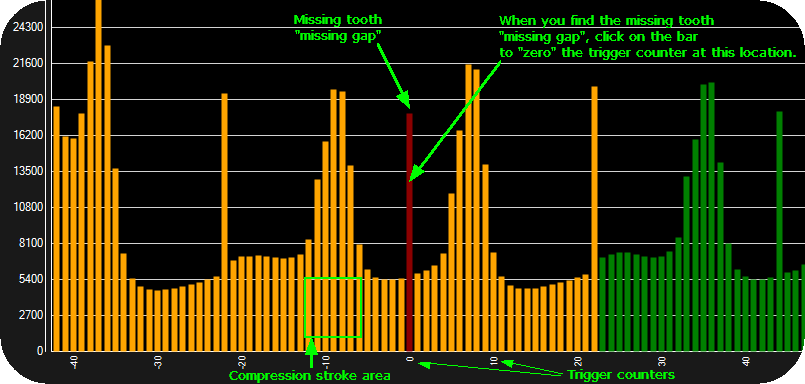
The built-in Trigger logger is used to determine the settings needed to setup this crankshaft deceleration function.
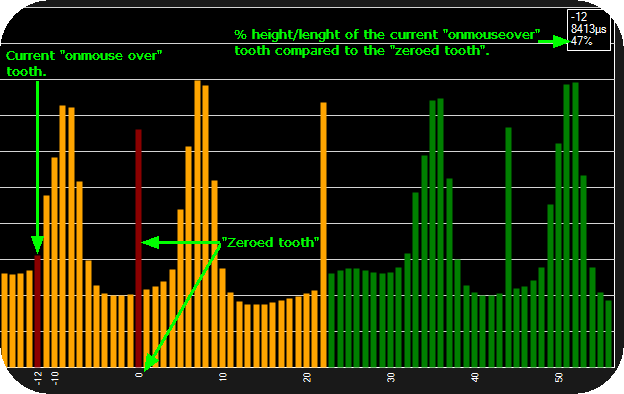
When a tooth is pressed, it will be the treated as the zero trigger tooth and when using the mouse to hover over any of the other bars, it will show the height compared to the zeroed one.
Note: The below MIN difference compares tooth offset 1 with tooth offset 2, not as the above "missing gap" tooth shows, which is for illustration purposes only.
Determine TOOTH offset 1.
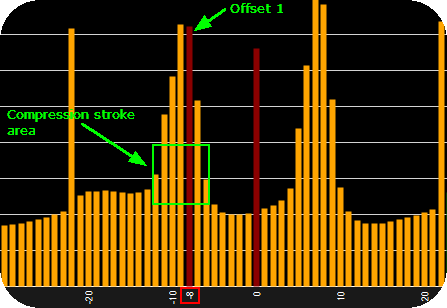
tooth OFFSET 1 is the "center position of the compression of the cylinder closest to the missing gap", using the number of teeth before the actual "missing gap tooth". In this example the TOOTH offset 1 is "-8".
Determine tooth offset 2.
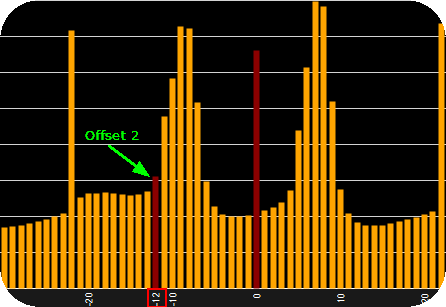
tooth OFFSET 2 is roughly the start of the "significant" change caused by the engines compression, also in the number before the "missing gap tooth". In this example the TOOTH offset 2 is "-12".
Determine min difference.
Specifies how much longer the TOOTH offset 1 tooth needs to be compared to the TOOTH offset 2 tooth.
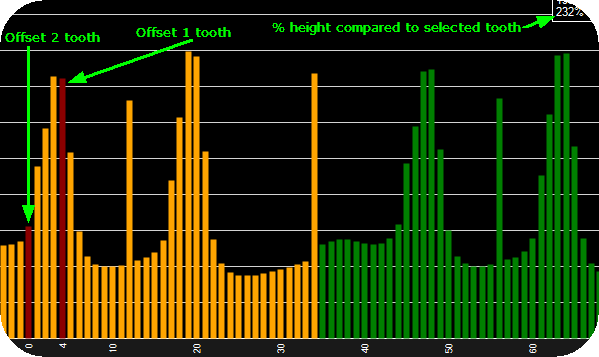
In this trigger logger image, we have zeroed at the TOOTH Offset 2 tooth, to easy determine the height of the Offset 1 tooth. Here TOOTH offset 2 is 232% of TOOTH offset 1, which means TOOTH offset 1 is 132% longer than TOOTH offset 2.
Populating with 50% should be fine here in this example.
Summarize

If the -8 tooth is 50% longer than the -12 tooth (before the missing gap), then it is considered as a sync signal.